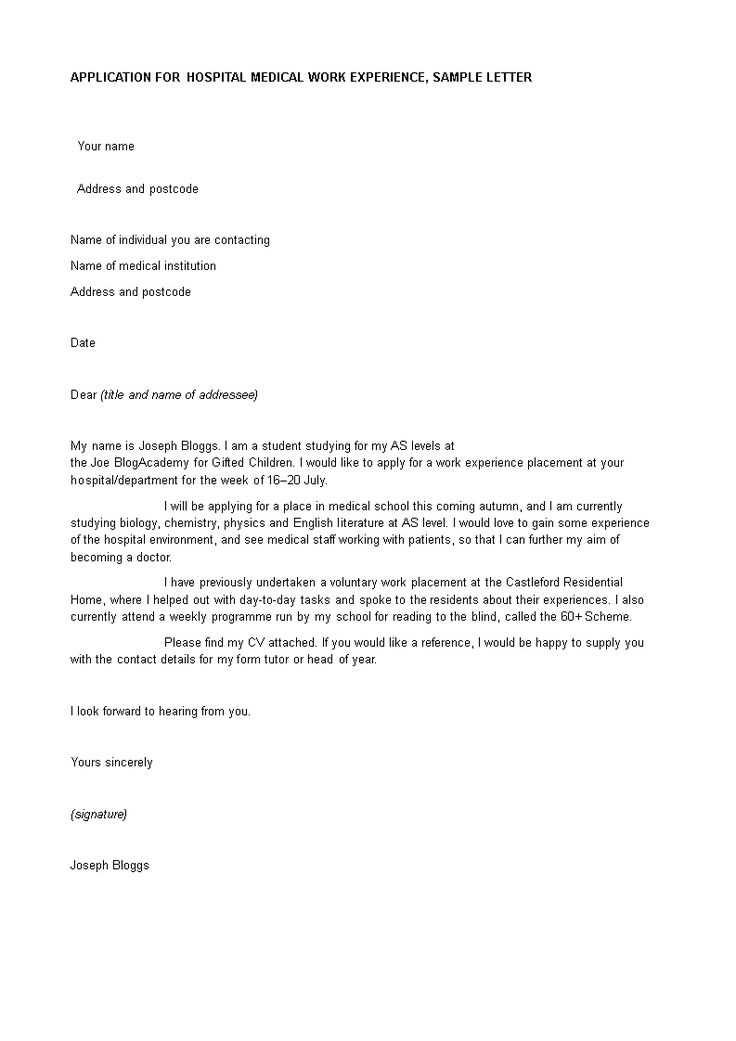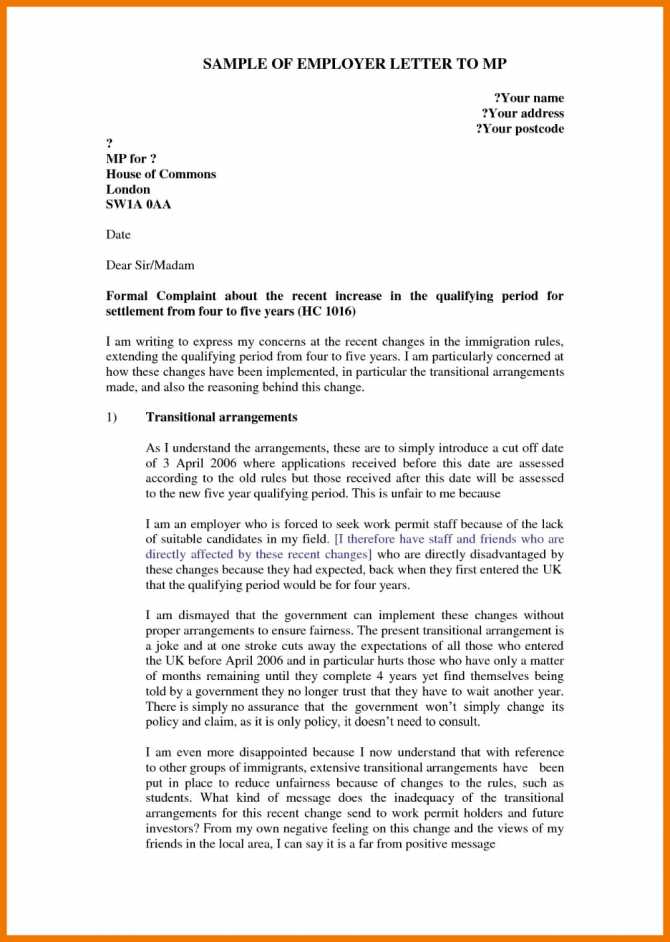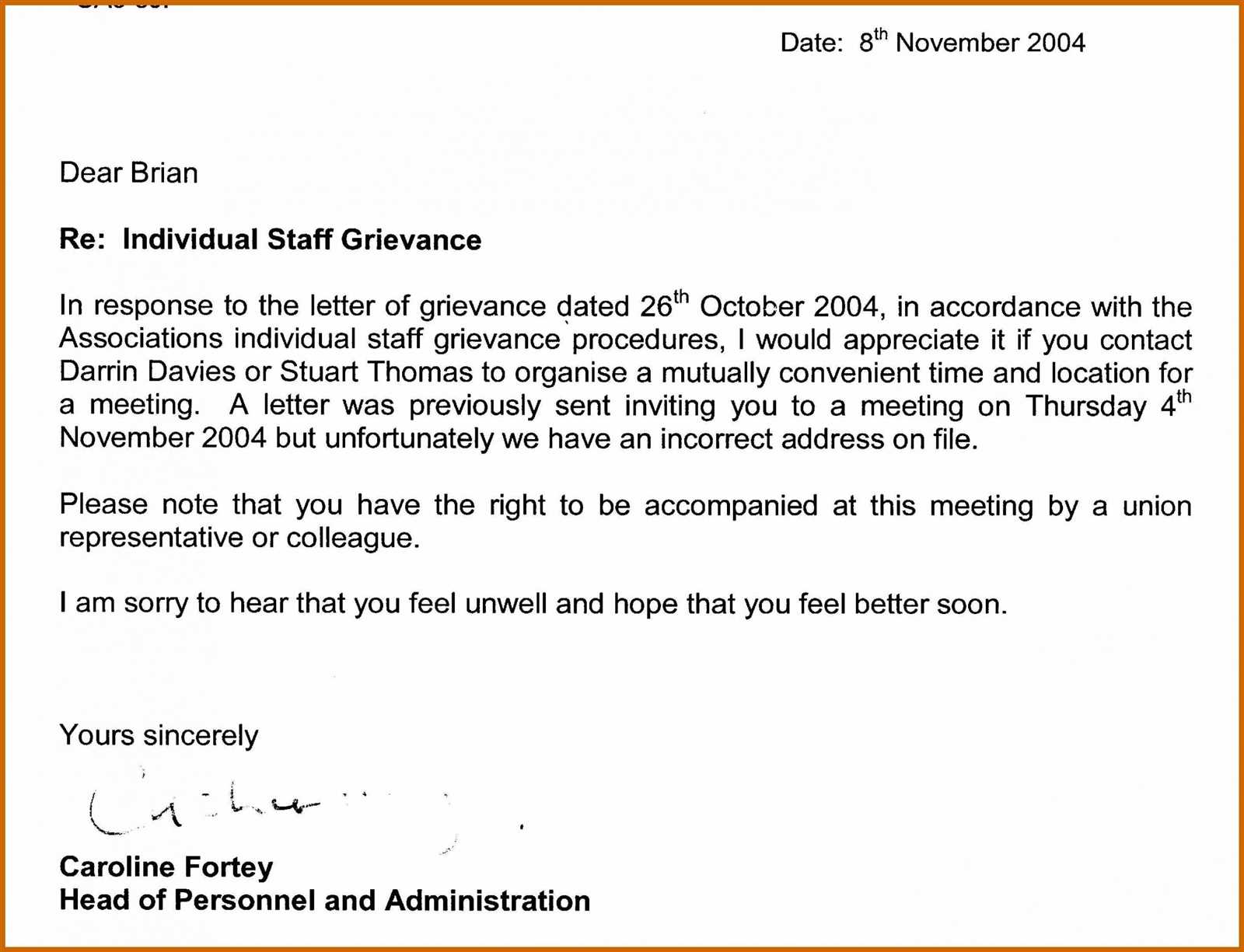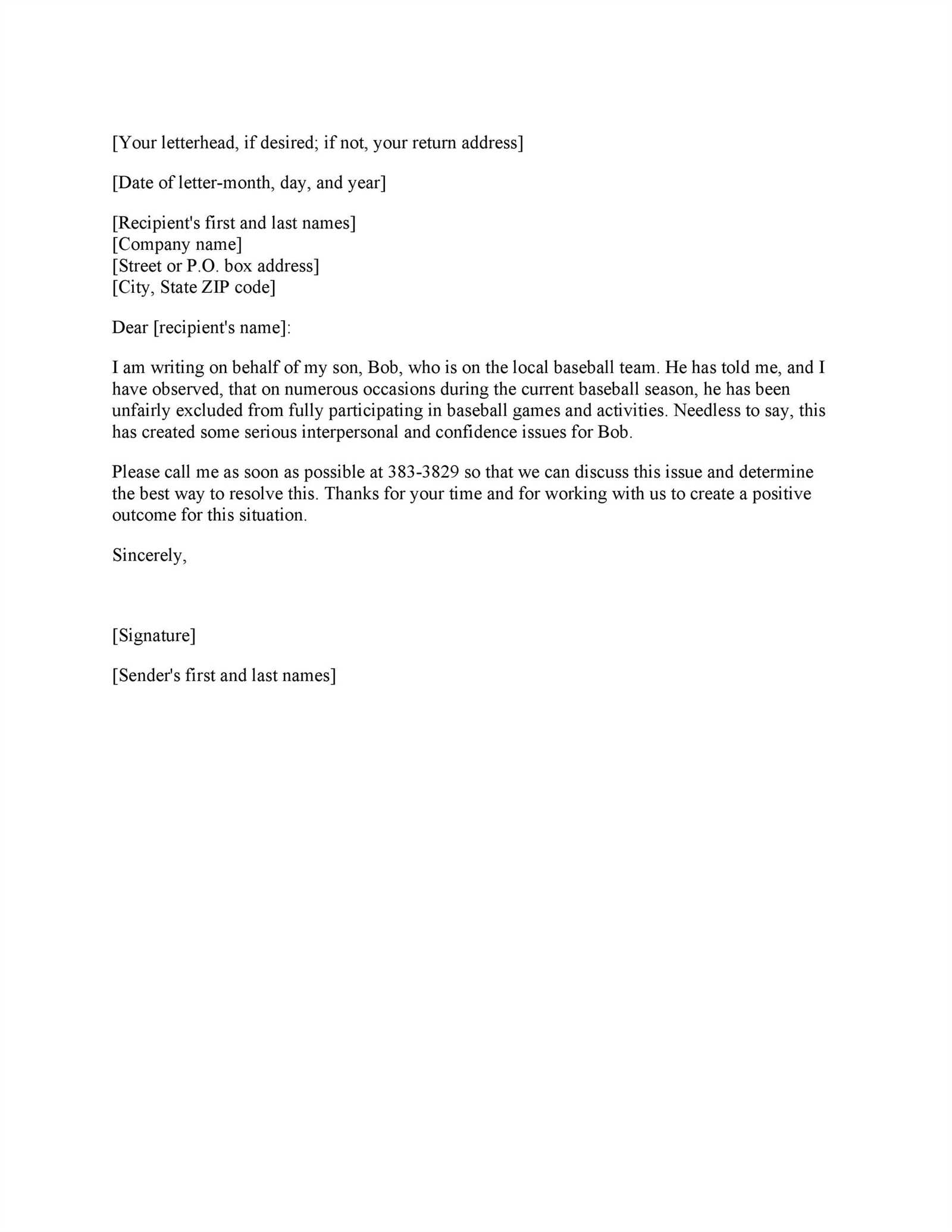Grievance Letter Template for Unfair Treatment

When facing problems in a professional environment, it’s important to express concerns in a structured and formal way. Doing so allows for clear communication of dissatisfaction while maintaining professionalism. Crafting a proper document ensures that your points are taken seriously and can help resolve the situation effectively.
Key Components of a Formal Complaint
To ensure your message is both clear and actionable, include the following elements in your communication:
- Clear Subject Matter: Be specific about the issue at hand without unnecessary details.
- Background Information: Briefly explain the events leading to your concern to provide context.
- Desired Outcome: State what you expect as a resolution to the issue.
- Evidence: If possible, provide facts or examples to support your claim.
- Professional Tone: Remain respectful and formal in your wording, regardless of the circumstances.
Common Mistakes to Avoid

When creating your document, be cautious of the following pitfalls:
- Aggressive Language: Avoid sounding confrontational, as this may hinder a positive response.
- Vague Descriptions: Ensure you are clear and direct about what happened.
- Ignoring Company Policy: Familiarize yourself with your workplace’s complaint process to ensure proper steps are followed.
When to Take Further Action
If after submitting your document there is no resolution or acknowledgement, it may be time to escalate your concerns. Consider seeking advice from HR or a legal advisor, depending on the severity of the issue. Taking the next step should be done carefully and only after all initial channels have been exhausted.
Sample Format for Submitting a Concern
Below is a basic outline of how you can structure your communication:
- Subject Line: State the issue briefly, e.g., “Request for Resolution of Workplace Issue.”
- Introduction: Mention your role and the purpose of your communication.
- Details of the Issue: Provide a factual account of what happened and when.
- Desired Outcome: Explain what you would like to see happen as a result of the communication.
- Conclusion: Express your willingness to discuss the matter further and thank them for their attention.
How to Address Concerns Professionally in the Workplace
When issues arise in a professional environment, it’s important to address them formally and clearly to ensure your concerns are taken seriously. Whether the problem relates to mistreatment or a specific situation, articulating your concerns in a structured way can help you get the attention and resolution you deserve.
Understanding the nature of workplace conflicts is essential for effectively handling them. Issues may arise due to various reasons, including perceived injustices, improper behavior, or failure to meet company expectations. Identifying the core problem helps in framing a concise, constructive communication to resolve the situation.
Key Elements to Include in a Formal Complaint
To craft an effective communication, certain elements must be included to make your point clear:
- Brief Introduction: Mention the issue you are addressing and the role or behavior that caused the problem.
- Contextual Information: Provide a brief background, including when the situation occurred and the specific circumstances surrounding it.
- Desired Outcome: Clearly express what you want to happen to resolve the issue, whether it’s an apology, action, or another remedy.
- Supporting Facts: Include relevant examples or evidence to strengthen your case and demonstrate the seriousness of the situation.
Steps to Resolve the Situation Effectively
After identifying the problem and drafting your communication, follow these steps to ensure a productive outcome:
- Ensure your message is clear and direct, avoiding unnecessary detail.
- Submit your communication to the appropriate individual or department, such as HR or your direct supervisor.
- Follow up if necessary, and be prepared to discuss your concerns further if you don’t receive a timely response.
Common Pitfalls to Avoid

There are several mistakes you should avoid to ensure that your message is taken seriously:
- Emotional Language: Stay professional and avoid sounding angry or vengeful.
- Overgeneralizing: Stick to facts and specifics, rather than making vague or sweeping statements.
- Ignoring Company Guidelines: Ensure that you are familiar with your company’s process for handling complaints or issues.
When to Take Further Action
If after addressing the issue through the appropriate channels, you feel your concerns remain unresolved, it may be necessary to escalate the matter. Seek advice from higher management, HR, or legal counsel to explore additional avenues for resolution.
Example Structure for Submitting a Formal Concern

Here’s a simple framework you can follow when submitting your communication:
- Subject: State the matter briefly, e.g., “Request for Action Regarding Workplace Issue.”
- Introduction: Introduce yourself and outline the purpose of your communication.
- Details: Provide a clear and concise account of the issue and supporting evidence.
- Desired Outcome: State how you would like the issue to be addressed or resolved.
- Conclusion: Express your willingness to engage further and thank the recipient for their time and attention.